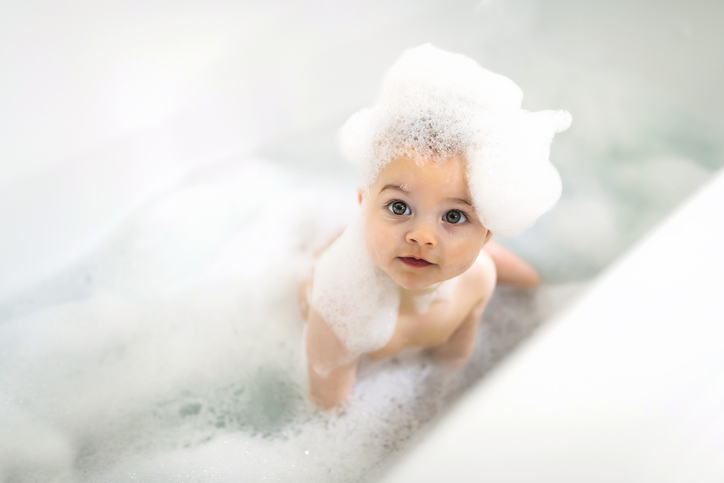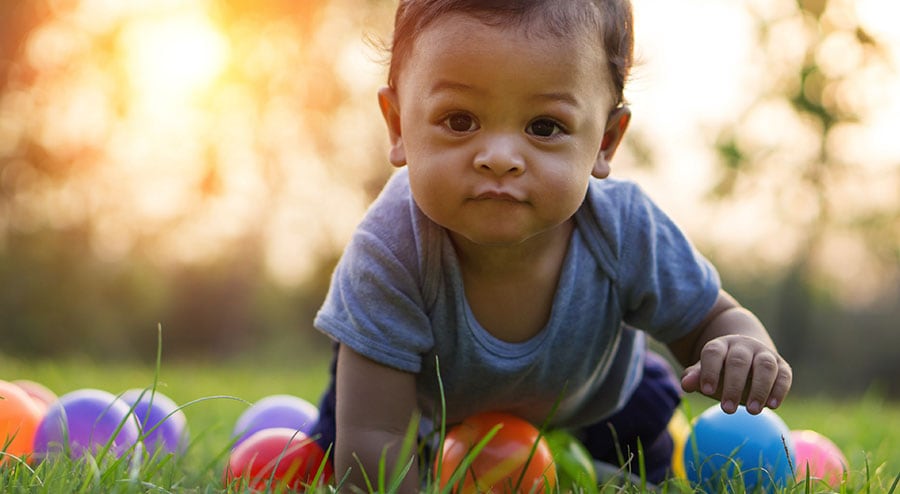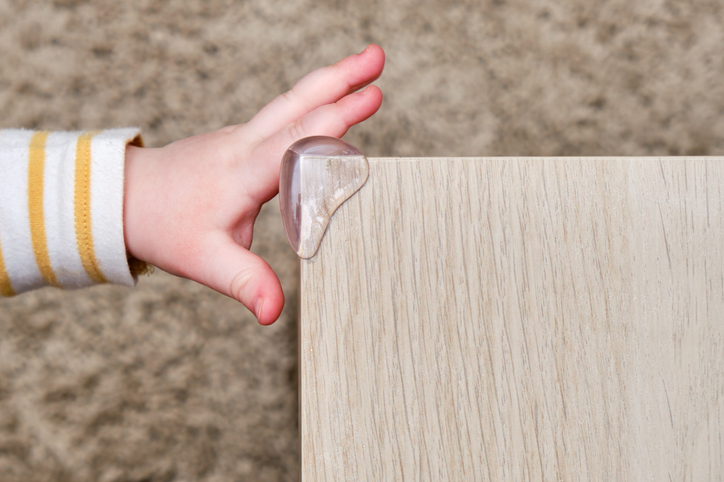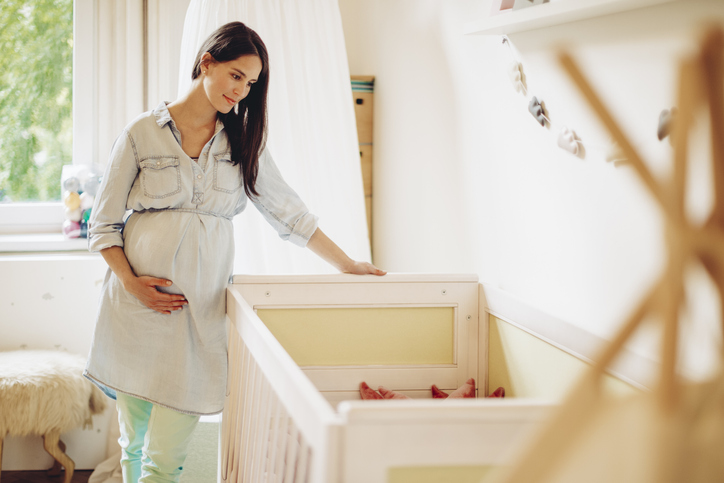Setting up a safe bathing environment creates a positive and enjoyable experience for both babies and caregivers. When preparing for bath time, maintain the right water temperature, typically between 95°F to 100°F (35°C to 37.8°C), and always test it with your elbow or a bath thermometer before placing the baby in the water. Having all necessary bathing items within arm’s reach helps avoid leaving the baby unattended during the bath. Additionally, using a non-slip mat or surface in the bathtub minimizes the risk of slipping accidents.

During bath time, proper support and handling are important in maintaining the baby’s safety. Always support the baby’s head and neck, especially for newborns, and choose safe methods for getting the baby in and out of the tub, avoiding the use of baby bath seats or rings that may pose risks. It’s also crucial to supervise the baby at all times and be attentive to signs that the water might be too hot for the baby’s comfort. If the baby is scared or fussy during the bath, providing a calm and soothing atmosphere can help ease their anxiety.
Accidents can happen, so being prepared to handle them is essential. If the baby accidentally swallows bath water, observe for any signs of distress and seek medical advice if necessary. Preemies may require special precautions during bath time, such as maintaining an especially warm and gentle environment. To ensure a safe drying and dressing process, caregivers should pay attention to maintaining a warm room temperature and trim the baby’s nails to prevent accidental scratching.
Overall, by following these essential tips and precautions, caregivers can create a safe and nurturing bath time routine that fosters bonding and promotes the well-being of their babies.
Preparing for Bath Time
Before beginning the bath, it is important to set up the bath area with all necessary supplies and precautions. When bath time begins, be sure to provide proper support and handling as described below.
Setting up the Bathing Area
A safe bathing environment can be created by first considering the water temperature. Keeping the water at a comfortable level between 95°F to 100°F (35°C to 37.8°C) is recommended for infants. Before placing the baby in the bath, make sure to test the water temperature using your elbow or a bath thermometer to avoid the risk of scalding or discomfort.
Having all the necessary items within arm’s reach including baby soap, shampoo, washcloth, towel, and any other bathing essentials is also important when setting up the bathing area. This allows caregivers to maintain constant supervision and avoid leaving the baby unattended during bath time. Moreover, using a non-slip mat or surface inside the bathtub provides extra traction, reducing the risk of slipping accidents, which is especially important when handling wet and slippery babies.
Ensuring Proper Support and Handling
Supporting the baby’s head and neck during bath time is extremely important, particularly for newborns and younger infants whose muscles are still developing. Caregivers should cradle the baby’s head and neck with one hand while using the other hand to gently support the baby’s body during the bath. This ensures that the baby’s head remains above the water and reduces the risk of accidental submersion.
When it comes to getting the infant in and out of the bathtub, caregivers can choose to either sit on the edge of the tub and carefully place the baby in the water, supporting the head and neck throughout the process, or utilize a baby bath sling to facilitate a smooth transition. It’s important to avoid using baby bath seats or rings that may provide a false sense of security, as these devices can pose risks and may not provide adequate support for the baby.
Paying attention to proper support and handling techniques ensures the baby’s safety and comfort throughout the bathing process and creates a secure and nurturing bath time environment.
Bathing Techniques and Frequency
Experts generally recommend bathing babies two to three times a week during the first year of life. Frequent bathing may lead to dry skin, and young babies typically do not get very dirty to require daily baths. It is recommended that parents focus on maintaining good hygiene in diaper areas and cleaning the face, hands, and folds of the skin daily along with bathing.
Opt for gentle and mild products specifically designed for babies when selecting soap and shampoos for your infant who tend to have delicate skin. Brands like Johnson’s Baby, Aveeno Baby, and Mustela offer a range of baby-friendly bathing products that are free from harsh chemicals, dyes, and fragrances. These products help to maintain the skin’s natural moisture balance and reduce the risk of skin irritation.
While some babies may not have much hair during the early months, it’s still necessary to rinse their scalps during each bath. Gently massaging the scalp with your fingers can help remove any flaky skin or residue, promoting a clean and healthy scalp. For babies with more hair, using a tear-free baby shampoo like Cetaphil Baby Shampoo or Burt’s Bees Baby Shampoo can make the washing process more comfortable and enjoyable.
Bathing Safety Measures
Extra precautions including constant supervision can be taken to maintain a safe environment for babies during bath time. It is also important to know how to handle accidents and certain emergencies that may emerge during this time.
Supervision and Precautions
Never leaving the baby unattended during bath time is a cardinal rule of infant safety. Even if the caregiver is just stepping away for a moment, accidents can happen in an instant. Drowning can occur in just a few inches of water, making it crucial for the caregiver to remain within arm’s reach of the baby at all times. If the doorbell rings or there’s a need to attend to something urgent, it’s best to take the baby out of the bath and bring them along to maintain their safety.
Monitoring the water temperature is equally important to prevent scalds or burns. Caregivers can use a bath thermometer to make sure that the water is at the right temperature, but it’s also helpful to look for signs that the water might be too hot for the baby’s comfort. If the baby appears restless, uncomfortable, or shows signs of discomfort, such as crying or fussiness, the water may be too warm. Caregivers should adjust the temperature accordingly and avoid using hot water bottles, as babies have more sensitive skin than adults and can get burned easily.
Use a gentle and reassuring approach to handle scared or fussy babies during bath time. Some babies may not initially enjoy bath time, but creating a calm and soothing atmosphere can help ease their anxiety. Caregivers can use soft, calming music, or sing to the baby to create a relaxing environment. Keeping the bath time short and playful with gentle splashes can also make the experience more enjoyable. If the baby remains anxious, it’s okay to skip the bath and try again later when the baby is more relaxed.
Dealing with Accidents and Emergencies
Accidents can happen during bath time, and it’s important for caregivers to be prepared to handle them effectively. If the baby accidentally swallows bath water, the first step is to remain calm. As mentioned earlier, a small amount of swallowed bath water is generally not a cause for major concern, as the baby’s body can manage it. However, caregivers should closely monitor the baby for any signs of distress or discomfort.
If the baby shows symptoms like coughing, choking, or difficulty breathing, seeking medical attention promptly is essential. Contacting a healthcare professional or visiting the nearest emergency room can provide the necessary reassurance and expert evaluation to ensure the baby’s well-being.
For premature babies, special precautions are necessary during bath time. Preemies often have more delicate skin and may be more sensitive to temperature changes. Keeping the room warm and using a soft towel to cover the baby during the bath can help maintain their body temperature. Additionally, preemies may tire more easily, so keeping the bath time short and gentle is recommended. Always consult with the baby’s pediatrician to get specific advice and guidelines on bathing premature babies to ensure their safety and well-being.
Bathing Alternatives and Tips
When it comes to a bath, there are various alternatives from traditional tubs that could be utilized as well as many water-related games and activities that are suitable for infants during bath time.
Alternative Bathing Methods
There are alternative bathing methods that are safe and enjoyable for infants if a tub is not preferred such as a sponge bath, which is particularly useful during the first few weeks after birth. During a sponge bath, caregivers use a soft, damp washcloth or sponge to clean the baby’s body instead of immersing them in water. This method is ideal for newborns, especially if the baby’s umbilical cord stump has not yet fallen off.
Another bathing alternative is the sink bath. As the baby grows, using a clean kitchen or bathroom sink with a soft towel as padding can provide a convenient and safe option for bath time. The sink’s size and design offer better support for the baby, making it easier for caregivers to handle them during the bath.
Games and Activities
Water-related games and activities can help engage the baby and make bath time enjoyable. For instance, floating rubber duckies or other bath toys can capture the baby’s attention and stimulate their sensory development. Splashing water gently with the baby’s hands or a cup can add an element of playfulness to the experience.
Singing songs or rhymes during bath time can also create a cheerful atmosphere. Caregivers can use this time to interact with the baby, making eye contact and engaging in simple conversations or cooing sounds. This not only strengthens the bond between the baby and caregiver but also enhances the baby’s language and social development.
As with any water-related activities, caregivers should always maintain supervision during bath time play to ensure the baby’s safety and prevent dangerous situations that could emerge. Taking advantage of these alternative methods and enjoyable activities makes bath time an enriching experience for any infant.
Addressing Skin Conditions and Sensitive Skin
Adopting gentle bathing techniques for babies with sensitive skin or certain skin conditions can prevent irritation or flare-ups. For instance, using lukewarm water instead of hot water helps maintain the skin’s natural moisture barrier and prevents excessive drying. Opting for fragrance-free and hypoallergenic baby soaps and shampoos specifically formulated for sensitive skin also helps. Brands like Cetaphil Baby, Aquaphor Baby, and Eucerin Baby offer a range of suitable products designed to be gentle on delicate skin.
When washing the baby’s body, use soft, patting motions instead of harsh rubbing to avoid friction and potential irritation. After the bath, gently pat the baby’s skin dry with a soft towel, avoiding aggressive rubbing that could further sensitize the skin. Moisturizing the baby’s skin with a fragrance-free, hypoallergenic baby lotion, cream, or ointment as mentioned afterward can help maintain the skin’s moisture and protect it from dryness.
Using essential oils or bath additives when bathing an infant with sensitive skin is not recommended unless specifically advised by a pediatrician or a dermatologist. Essential oils and additives can contain potent compounds that may cause skin irritation or allergic reactions in babies, especially those with sensitive skin.
Drying and Dressing After Bath
There are certain practices to follow for drying and dressing your baby after their bath to prevent chill following bathtime. Additionally, trimming your baby’s nails before or after bath time to avoid scratching is an important tip to be addressed.
After Bath Practices
Dry the baby thoroughly after bathtime to prevent them from getting chilled and irritated. Caregivers can use a soft, absorbent towel to gently pat the baby’s skin dry. Paying special attention to areas with folds, such as the neck, armpits, and groin, helps prevent moisture buildup, reducing the risk of skin irritation or rashes. A hooded towel can be useful for wrapping the baby’s head and keeping them warm.
Opt for loose, comfortable clothing made from soft, breathable fabrics like cotton when dressing the baby. Dressing the baby in layers allows for easy adjustments in response to changes in room temperature. Additionally, using a diaper cream or ointment, like Desitin or Boudreaux’s Butt Paste, can help protect the baby’s sensitive skin and prevent diaper rash.
Nail Health and Safety
It is important to keep your baby’s nails trimmed to prevent accidental scratching, which can lead to skin irritation or infection. Caregivers can use baby nail clippers with rounded edges or emery boards designed for infants to safely trim the baby’s nails. It’s advisable to perform nail trimming either before or after bath time, as the baby’s nails tend to be softer and easier to trim when they are slightly softened from the water.
Be cautious while trimming the baby’s nails and avoid cutting too close to the skin to prevent injuries. If uncertain or uncomfortable with trimming the baby’s nails themselves, they can seek the assistance of a pediatrician, a nurse, or a professional baby nail trimming service.
Bathing Twins or Multiple Infants
Bathing twins or multiple infants can offer challenges yet some rewards for caregivers. A baby bath support or bath sling can be a valuable tool when bathing twins or multiple infants simultaneously. These devices provide additional support and security, allowing caregivers to keep their hands free to tend to each baby’s needs. Popular brands like Summer Infant and Angelcare offer various bath supports and slings suitable for bathing multiple infants.
Caregivers should consider using two separate baby tubs or bathing spaces, especially if the babies are still quite small. This prevents them from accidentally bumping into each other during the bath, reducing the risk of injuries. Additionally, having another caregiver or family member present during bath time can provide assistance and an extra pair of eyes to matintain the safety and comfort of all babies involved.
Take Away
Safe bath time practices are very important to consider for the well-being of infants. By adhering to guidelines and precautions, caregivers can create a nurturing environment, fostering emotional bonds with their children. Vigilance, proper support, and baby-friendly products are key for a positive experience and safety. Following the guidelines outlined above allows for caregivers to prioritize the baby’s safety, well-being, and emotional development.




